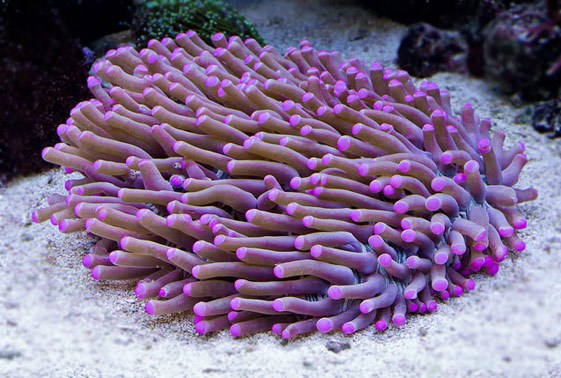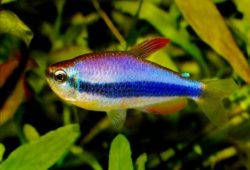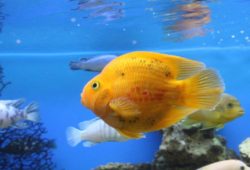Tropical Marine Aquarium Disk Corals
In the article you will find some basic information on Tropical Marine Aquarium Disk Corals. This unusual, attractive coral is as great in the beginner’s aquarium as it is in the advanced hobbyist’s tank. Colorful and hardy, disk corals should not be overlooked.

Within the Family Fungiidae, the marine aquarist will find the disk corals from the genus Fungia. These corals are, like all members of the family, non-reef building (ahermatypic) stony corals that make ideal aquarium animals. Disk corals can even be appropriate beginner corals if provided with the proper environmental conditions. Regardless, they are sure to bring your aquarium to life with their striking colors, unique looks and fascinating behaviors.
Contents
Motile, Substrate Dwelling Corals
Disk corals are substrate-dwelling animals, meaning that they live on the bottom of the aquarium either on the sand or amongst rubble. In nearly all cases, disk corals should not be placed on the rockwork. Doing so can cause tearing of their tissue during normal expansion and retraction. While these corals often begin life attached to a rock or shell, as adults, they are free-living and can move about the aquarium. This moving behavior is fascinating; although care should be taken as they can easily damage or kill other corals with which they come into contact. They will not harm other members of the Family Fungiidae.
Matching Shape to Substrate
Perhaps the most important aspect of selecting and placing a disk coral is matching the animal’s shape to the substrate in the aquarium. Because it is difficult to differentiate between species by looking at a live specimen, you should pay particular attention to how flat or domed the top of the coral is. The more domed the individual animal is, the better it will handle a tank with soft substrate like sand. The reason for this is that the domed shape helps the coral shed any substrate that may land on it. Accumulated sediment can lead to stress and tissue death, and the flatter disk corals therefore do best in tanks with rubble bottoms. All disk corals prefer moderate to low flow and high-intensity reef lighting.
Diet
Disk corals have a single mouth surrounded by tentacles that emerge from between thin skeletal plates. While they do host photosynthetic symbiotic algae (zooxanthellae), disk corals also appreciate target feedings of meaty marine foods once or twice a week. They can actually consume some remarkably large pieces of marine flesh, although you may have to guard against shrimp attempting to steal the meal before it is consumed. Keep in mind that disk corals will only eat when they are inflated. Although many aquarium specimens remain inflated all day, in the wild, they often only inflate and feed at night. As such, feeding after the lights have gone out and the flow has been temporarily reduced is most effective.
Important Handling Consideration
One last important point: never remove a disk coral from the water while the coral is expanded. Doing so can lead to tissue tearing, infection, stress, and possibly even death. Instead, wave your hand over the coral, and wait it for it to deflate before removing it from the water.
Conclusion
With proper handling and the right environmental conditions, disk corals will prove to be hardy, attractive aquarium species for everyone from the beginning aquarists to the experienced hobbyist.



